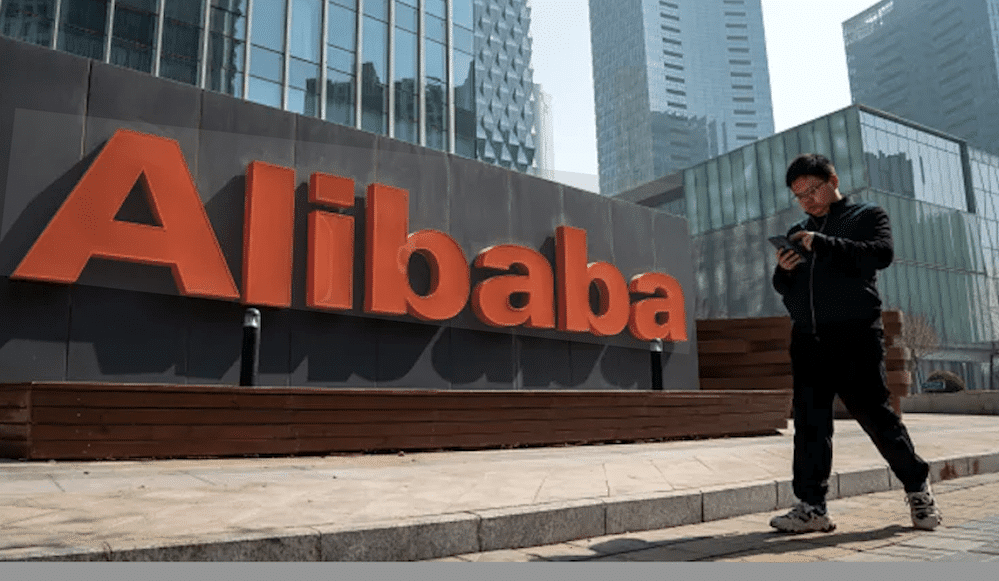The importance of network effects is well known. Economists have long understood that digital platforms like Facebook enjoy same-side (“direct”) network effects: The more Facebook friends you have in your network, the more likely you are to attract additional friends through your friends’ connections. Facebook also leverages cross-side (“indirect”) network effects, in which two different groups of participants—users and app developers—attract each other. Uber can similarly mine cross-side effects, because more drivers attract more riders, and vice versa.
Less well acknowledged is the fact that the strength of network effects can vary dramatically and can shape both value creation and capture. When network effects are strong, the value provided by a platform continues to rise sharply with the number of participants. For example, as the number of users on Facebook increases, so does the amount and variety of interesting and relevant content. Video game consoles, however, exhibit only weak network effects, as we discovered in a research study.
This is because video games are a hit-driven business, and a platform needs relatively few hits to be successful. The total number of game titles available isn’t as important in console sales as having a few of the right games. Indeed, even an entrant with only a small technical advantage (and a good business development team) can steal significant market share from incumbents.
That explains why in 2001 Microsoft’s new Xbox posed such a threat to Sony’s then-dominant PlayStation 2, and why each console has gone up and down in market share, alternately taking the lead, over the years.
Even more critically, the strength of network effects can change over time. Windows is a classic example. During the heyday of personal computers in the 1990s, most PC applications were “client-based,” meaning they lived on the computers. Back then, the software’s network effects were strong: The value of Windows increased dramatically as the number of developers writing apps for it climbed, topping 6 million at the peak of its popularity.
By the late 1990s Windows seemed entrenched as the leading platform. However, as internet-based apps, which worked across different operating systems, took off, the network effects of Windows diminished and barriers to entry fell, allowing Android, Chrome, and iOS operating systems to gain strength on PCs and tablets. Mac shipments had also begun to rise in the mid-2000s, increasing more than five-fold by the end of the decade. This turn of events illustrates that when an incumbent’s network effects weaken, so does its market position.
Firms can design features that strengthen network effects, however. Amazon, for example, has built multiple types of effects into its business model over the years. In the beginning, Amazon’s review systems generated same-side effects: As the number of product reviews on the site increased, users became more likely to visit Amazon to read the reviews as well as write them.
Later, Amazon’s marketplace, which allows third parties to sell products to Amazon users, generated cross-side network effects, in which buyers and third-party sellers attracted each other. Meanwhile, Amazon’s recommendation system, which suggests products based on past purchase behaviour, amplified the impact of the company’s scale by continually learning about consumers’ preferences.
The more consumers used the site, the more accurate the recommendations Amazon could provide them. While not usually recognized as a network effect per se, learning effects operate a lot like same-side effects and can increase barriers to entry.
Network Clustering
In a research project with Xinxin Li of the University of Connecticut and Ehsan Valavi, a doctoral student at Harvard Business School, we found that the structure of a network influences a platform business’s ability to sustain its scale. The more a network is fragmented into local clusters—and the more isolated those clusters are from one another—the more vulnerable a business is to challenges.
Consider Uber. Drivers in Boston care mostly about the number of riders in Boston, and riders in Boston care mostly about drivers in Boston. Except for frequent travellers, no one in Boston cares much about the number of drivers and riders in, say, San Francisco. This makes it easy for another ride-sharing service to reach critical mass in a local market and take off through a differentiated offer such as a lower price. Indeed, in addition to its rival Lyft at the national level, Uber confronts several local threats. For example, in New York City, Juno and Via, as well as local taxi companies, are giving it competition. Didi likewise faces some strong contenders in multiple cities.
Now let’s compare Uber’s market with Airbnb’s. Travelers don’t care much about the number of Airbnb hosts in their home cities; instead, they care about how many there are in the cities they plan to visit. Hence, the network more or less is one large cluster. Any real challenger to Airbnb would have to enter the market on a global scale—building brand awareness around the world to attract critical masses of travellers and hosts. So breaking into Airbnb’s market becomes much more costly.
It’s possible to strengthen a network by building global clusters on top of local clusters. While Craigslist, a classified ad site, primarily connects users and providers of goods and services in local markets, its housing and job listings attract users from other markets.
Facebook’s social games (like FarmVille) established new connections among players who were strangers, creating a denser, more global, more integrated network, which is easier to defend from the competition. Both Facebook and WeChat, a popular social networking app in China, have been enhancing their networks by getting popular brands and celebrities—those with national and often international appeal—to create public accounts and post and interact with users.
Risk of Disintermediation
Disintermediation, wherein network members bypass a hub and connect directly, can be a big problem for any platform that captures value directly from matching or by facilitating transactions. Imagine that you hire a house cleaner from a platform like Homejoy and are satisfied with the service.
Would you go back to Homejoy to hire the same person again? If a user has found the right match, there’s little incentive to return to the platform. Additionally, after obtaining enough clients from a platform to fill his or her schedule, the house cleaner won’t need that platform anymore. This was exactly the problem that doomed Homejoy, which shut down in 2015, five years after it was founded.
Which Network Structure Is More Defensible?
Some digital networks are fragmented into local clusters of users. In Uber’s network, riders and drivers interact with network members outside their home cities only occasionally. But other digital networks are global; on Airbnb, visitors regularly connect with hosts around the world.
Platforms on global networks are much less vulnerable to challenges because it’s difficult for new rivals to enter a market on a global scale.


Platforms have used various mechanisms to deter disintermediation, such as creating terms of service that prohibit users from conducting transactions off the platform and blocking users from exchanging contact information. Airbnb, for example, withholds hosts’ exact locations and phone numbers until payments are made. Such strategies aren’t always effective, though. Anything that makes a platform more cumbersome to use can make it vulnerable to a competitor offering a streamlined experience.
Some platforms try to avoid disintermediation by enhancing the value of conducting business on them. They may facilitate transactions by providing insurance, payment escrow, or communication tools; resolve disputes; or monitor activities.
But those services become less valuable once trust develops among platform users—and the strategies can backfire as the need for the platform decreases. One of us, Feng, and Grace Gu, a doctoral student at Harvard Business School, saw this effect in a study of an online freelance marketplace. As the platform improved its reputation-rating system, trust between clients and freelancers grew stronger, and disintermediation became more frequent, offsetting the revenue gains from better matching.
Some platforms address disintermediation risks by introducing different strategies for capturing value—with varying results. Thumbtack, a marketplace connecting consumers with local service providers such as electricians and guitar teachers, charges for lead generation: Customers post requests on the site, and service providers send them quotes and pay Thumbtack fees if those customers respond.
That model captures value before the two sides even agree to work together and has helped save the company from withering like Homejoy. Thumbtack today is handling over $1 billion worth of transactions annually. The downside of its revenue model is that it doesn’t prevent the two sides from building a long-term relationship outside the platform after a match.
Alibaba took a different approach with its Taobao ecommerce platform. When Taobao entered the market, in 2003, eBay’s EachNet had more than 85% of the Chinese consumer-to-consumer market. However, Taobao didn’t charge listing or transaction fees and even set up an instant messaging service, Wangwang, that allowed buyers to ask questions directly of sellers and haggle with them in real-time.
In contrast, EachNet charged sellers transaction fees and, because it was concerned about disintermediation, didn’t allow direct interactions between buyers and sellers until a sale had been confirmed. Not surprisingly, Taobao quickly took over leadership of the market, and at the end of 2006, eBay shut down its Chinese site. Taobao today continues to offer its C2C marketplace services free of charge and captures value through advertising revenues and sales of storefront software that helps merchants manage their online businesses.
After estimating that it could lose as much as 90% of its business to disintermediation, the Chinese outsourcing marketplace ZBJ, which launched in 2006 with a model of charging a 20% commission, began looking for new revenue sources. In 2014 it was discovered that many new business owners used its site to get help with logo design. Typically, the next job those clients would need done was business and trademark registration, which the platform started to offer.
Today ZBJ is the largest provider of trademark registration in China—a service that generates more than $70 million in annual revenue for the firm. The company has also significantly reduced its transaction fees and focused its resources on growing its user base instead of fighting disintermediation. As the experience of ZBJ, which is now valued at more than $1.5 billion, shows, when disintermediation is a threat, providing complementary services can work a lot better than charging transaction fees.
Vulnerability to Multi-Homing
Multi-homing happens when users or service providers (network “nodes”) form ties with multiple platforms (or “hubs”) at the same time. This generally occurs when the cost of adopting an additional platform is low. In the ride-hailing industry, many drivers and riders use both, say, Lyft and Uber—riders to compare prices and wait times, and drivers to reduce their idle time.
Similarly, merchants often work with multiple group-buying sites, and restaurants with multiple food-delivery platforms. Even app developers, whose costs are not trivial, still find it makes sense to develop products for both iOS and Android systems.
When multi-homing is pervasive on each side of a platform, as it is in ride-hailing, it becomes very difficult for a platform to generate a profit from its core business. Uber and Lyft are constantly undercutting each other as they compete for riders and drivers.
Incumbent platform owners can reduce multi-homing by locking in one side of the market (or even both sides). To encourage exclusivity, both Uber and Lyft gave bonuses in many markets to people who completed a certain number of trips in a row without rejecting or cancelling any or going offline during peak hours.
While rides are in progress, both platforms provide drivers with new requests for pickups very close to current passengers’ drop-off locations, reducing the drivers’ idle time and hence the temptation to use other platforms. Yet because of the inherently low cost of adopting multiple platforms, multi-homing is still rampant in ride-sharing.
Attempts to prevent multi-homing can also have unintended side effects. In one research project, Feng and Hui Li of Carnegie Mellon University examined what happened in 2011 when Groupon retooled its deal counter—which tracks the amount of people who have signed up for a specific offer on its site—to show ambiguous ranges, rather than precise numbers.
Must read: Artificial Intelligence is Shaping the Future of ecommerce
It then became more difficult for LivingSocial to identify and poach the popular merchants on Groupon. As a result, LivingSocial started to source more exclusive deals. While Groupon was able to reduce merchant-side multi-homing, the research found, that consumers became more likely to visit both sites, because there were fewer overlapping deals on them, and it cost little to multi-home. That finding points to a key challenge platform firms face: Reducing multi-homing on one side of the market may increase multi-homing on the opposite side.
Other approaches seem to work better. Let’s look again at the video game industry: Console makers often sign exclusive contracts with game publishers. On the platforms’ user side, the high prices of consoles and subscription services, such as Xbox Live and PlayStation Plus, reduce players’ incentives to multi-home.
Lowering multi-homing on both sides of the market decreased competitive intensity and allowed the console makers to be profitable. Amazon, which provides fulfilment services to third-party sellers, charges them higher fees when their orders are not from Amazon’s marketplace, incentivising them to sell exclusively on it. Amazon Prime, which gives subscribers free two-day shipping on many products, helps the company reduce online shoppers’ tendency to multi-home.
Network Bridging
In many situations, the best growth strategy for a platform may be to connect different networks. In any platform business, success hinges on acquiring a high number of users and amassing data on their interactions. Such assets can almost invariably be valuable in multiple scenarios and markets. By leveraging them, firms that have succeeded in one industry vertical often diversify into different lines of business and improve their economics. This is a fundamental reason why Amazon and Alibaba have moved into so many markets.
When platform owners connect with multiple networks, they can build important synergies. Alibaba successfully bridged its payment platform, Alipay, with its e-commerce platforms Taobao and Tmall, providing a much-needed service to both buyers and sellers and fostering trust between them.
Alibaba has also taken advantage of transaction and user data from Taobao and Tmall to launch new offerings through its financial services arm, Ant Financial—including a credit-rating system for merchants and consumers. And information from that rating system allowed Ant Financial to issue short-term consumer and merchant loans with very low default rates.
With those loans, consumers can purchase more products on Alibaba’s e-commerce platforms, and Alibaba’s merchants can fund more inventory. These networks mutually reinforce one another’s market positions, helping each network sustain its scale. Indeed, even after the rival platform Tencent offered a competing digital wallet service, WeChat Pay, through its app WeChat, Alipay remained attractive to consumers and merchants because of its tight bridging with Alibaba and Ant Financial’s other services.
Further Reading
“Managing Our Hub Economy” Marco Iansiti and Karim R. Lakhani HBR.
As the most successful platforms connect across more and more markets, they’re becoming increasingly effective at tying together industries. Just as the Alibaba Group moved from commerce to financial services, Amazon has moved beyond retail to entertainment and consumer electronics. Platforms are thus becoming crucial hubs in the global economy.
Failure to embrace personalisation
With the advent of AI, the rise of individual personalisation for each consumer now dominates marketing. It is bt far the most successful marketing phenomenon with advocates including McKinsey, Statista and Forrester all agreeing that it generates as much as 20 times the return than every other marketing discipline combined. Not however to be restricted by the dated assumption this refers to CRO personalisation, as this waits for consumers to come to you.
Rather it applies to the specific function of hyper-personalisation in communications, taken to the consumer. The principle that those who adopt early thrive, is now widely accepted. Ten years from now some massive names will have fallen by the wayside, as the tardiness to adopt ultimately caused their demise.
CONCLUSION
When evaluating an opportunity involving a platform, entrepreneurs (and investors) should analyse the basic properties of the networks it will use and consider ways to strengthen network effects. It’s also critical to evaluate the feasibility of minimising multi-homing, building global network structures, and using network bridging to increase scale while mitigating the risk of disintermediation.
That exercise will illuminate the key challenges of growing and sustaining the platform and help businesspeople develop more realistic assessments of the platform’s potential to capture value.
Network-bridging opportunities so far have had only limited success. They’ve been able to establish bridges just with other highly competitive businesses, like food delivery and snack vending. (In 2018 Uber struck a deal to place Cargo’s snack vending machines in its vehicles, for instance.) And the inevitable rise of self-driving taxis will probably make it challenging for Didi and Uber to sustain their market capitalisation. Network properties are trumping platform scale.





One Response
I now have a better understanding of what it takes to build a thriving platform, and I’m grateful for the valuable insights shared. Thank you for shedding light on this important topic!